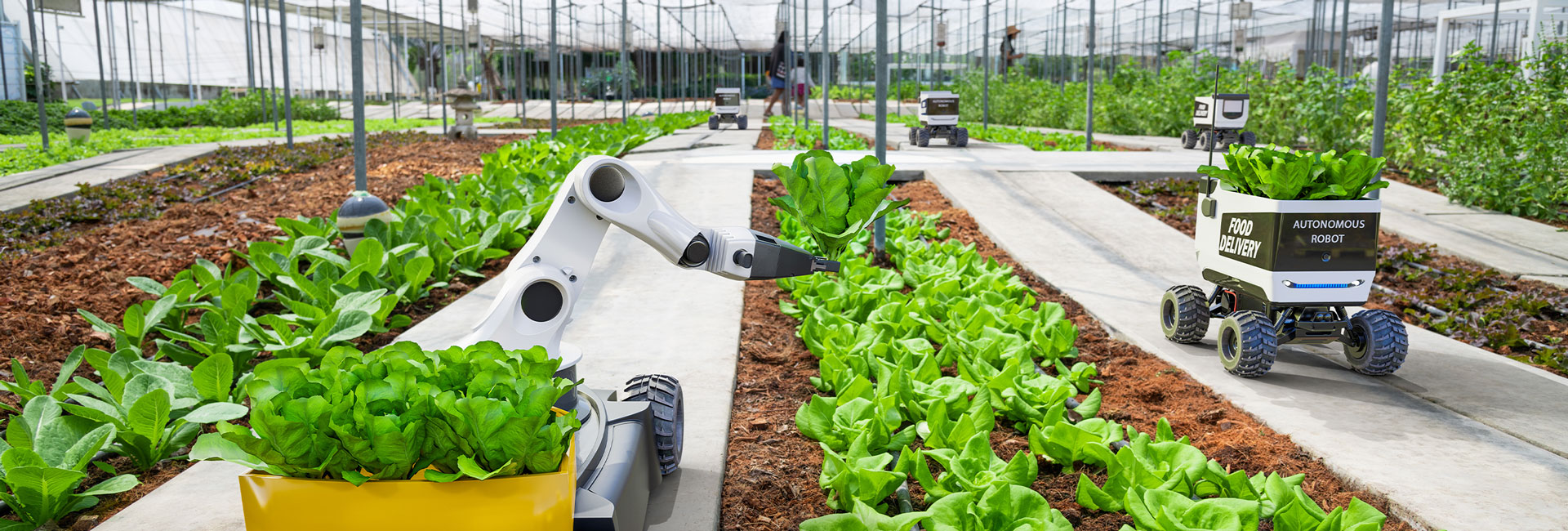Digital transformation applications in agriculture create smart agriculture while modernizing value chains and connecting agroecosystems. The article below will provide information about three digital transformation applications that effectively support the agricultural industry.
1. Application of Digital Transformation to increase agricultural production efficiency
The Covid-19 pandemic 2019 – 2021 has caused many impacts on the entire economy, including agriculture. Covid has created a disruption in the supply chain, indirectly increased the costs of production and transportation of agricultural products and reduced the consumption.
Besides, Vietnam’s agriculture is still small and fragmented, and most of the products are in unprocessed form. On the other hand, information in production planning has not been unified, leading to spontaneous farming, which then usually cause a situation of devaluation crops or abandoned inconsumable agricultural products.
Existing problems make the overall agricultural production in Vietnam inefficient and are difficult to meet the increasing demand for product quality with both domestic and international customers. Accordingly, increasing production efficiency is a necessary condition for the development of domestic agriculture.
Some digital transformation applications in agriculture can be mentioned as:
- Automated Robots:
Using robots in agriculture is a complicated problem due to the machine’s complex characteristics such as the softness of plants and different seasonal characteristics… However, with the advancement of modern science, sensor chip variables were used to identify plant characteristics.
The development of positioning and detecting object technology drive the price of robots / drones to become more attractive. Farming automation can lead to significant reductions in waste, manual labor hours, and automate activities such as irrigation, harvesting, and crop tracking becoming popular. Therefore, digital transformation can increase agricultural productivity.

- Artificial intelligence (AI) technology:
AI technology is also considered an effective assistant to enhance agricultural efficiency. Google AI can recognize more than 5000 variables of land, water, and organisms to help drones detect disease and avoid crop damage early.
Another example of AI application in agriculture can be found in IBM’s application named “IBM the Weather”, which provides 70-80% accurate damage forecasts and analysis within 72 hours before the storm comes.
- IoT Applications:
In modern agricultural, IoT is an indispensable technology to connect individual agricultural systems into a unified data block. Simultaneously, this technology can be controlled through a centralized application to increases the agricultural production efficiency.
IoT applications combined with automatic irrigation systems are quite popular in Kentucky farms (USA and Australia). It could reduce production costs by 8-20% such as water, medicine, fuel…, increases the irrigation efficiency by 5-14%, production output per hectare also increases by 10% simultaneously (According to the research of FAO – Rural areas report 2019).
2. Digital Transformation Applications to Increase Agricultural Resilience:
In recent years, climate change has impacted the agricultural environment growth; the Covid pandemic has disrupted the supply chain of agricultural inputs and outputs. Digital technology application is the key component to repair these challenges. Some outstanding digital transformation applications in agriculture can be mentioned as:
- Cloud computing technology:
The general trend in agriculture and other industries is the development based on the results of data analysis. With affordable costs and easy accessibility, farmers and businesses can easily collect, store and analyze huge amounts of data without worrying about hardware investment costs.
- Using RFID, Big Data:
These technologies also support big data analysis to help to make fast, appropriate, and accurate agricultural management decisions. In Pakistan, these apps are applied in the cow management and breeding. This helps farms increase 5% of livestock productivity and disease management ability, achieving $1 billion in value for farmers while increases 30% of profit margins.
These figures show the desirable effects that technologies can support the recovery and development of the agricultural economy to confront with era challenges.

3. Applying Digital Transformation to Improve Agriculture Sustainability
With nearly 8 billion people (In 2022), agriculture is the largest economic sector in the world to meet the food needs of the whole planet. This industry is directly related to the earth’s resources such as land, water, plants, etc.
Concentrating on and maintaining agricultural sustainability are key factors in ensuring a balanced living environment and food stability in the world. Nations are increasingly interested in agriculture sustainability, so the digital transformation application for these activities is becoming more popular.
Some typical digital transformation applications in agriculture can be mentioned as:
- Blockchain technology increases the transparency of data in agricultural production:
Blockchain technology supports consumers trace the food origin from inputs to outputs. In an era of consumers caring about product quality and agricultural sustainability, Blockchain emerges as a trust name that enhances transparency.
According to statistics, 49% of current consumers are interested in food traceability. It is not only the consumer interest, but also is a factor that creates faith in suppliers without acquaintance. In the future, Blockchain technology will be a tool to ensure product quality, transparency and sustainability in agricultural production.

- Agricultural emission management technology:
Controlling agricultural emissions by digital transformation is not a new story for countries with developed agriculture. This helps modern farmers to be more responsible for their environmental practices and towards more sustainable agriculture in the future.
Using technology and applying digital transformation to improve productivity, sustainability, competitiveness has become familiar to many economic sectors. In such specific industry with many difficult characteristics to apply technology, digital transformation applications in agriculture are gradually catching up with other industries in the development trends, towards digital agriculture in the future.





